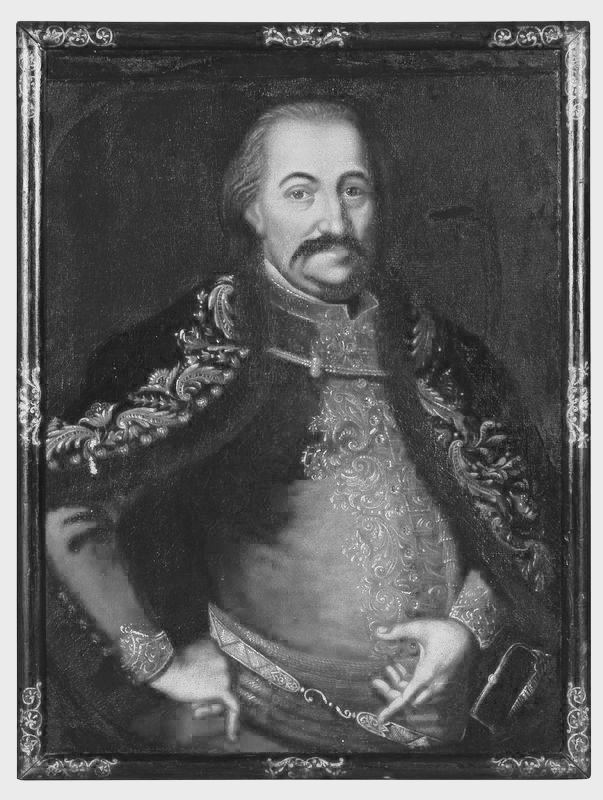 | ||
Died 26 July 1832, Bobova, Serbia | ||
Jovan Simić Bobovac (17. August 1775–26 July 1832) was a Serbian Knyaz (prince), President of the Serbian Supreme Court, politician and participant of the First (1804) and Second Serbian Uprising (1815) against the Turks in the occupied Serbia. One of the closest collaborators of prince Miloš Obrenović.
Contents
Background
He was born in 1775 in the village of Bobova, in the "Simić Hamlet" (Serbian: ”Засеок Симића”). The Simić brotherhood moved to Valjevo's Podgorina around the beginning of the 18th century from Rudine near Nikšić, from the Drobnjaci (i.e. Stefanije Simić). On their way towards Hungary with other refugees from "Old Herzegovina" and Montenegro , they stopped in Valjevo's Podgorina, at the foot of the Medvednik mountain (probably because the impassable hinterland of Podgorina provided excellent security from the Turks ). The hill beneath which the "Simić Hamlet" is still located today is called the "Simić peak" (Serbian: ”Симића вис”).
Early career
It is known that he was a Boluk-bashi (a military commander) under the famous obor-knez beneath the Medvednik mountain, Ilija Birčanin. After the Slaughter of the knezes, Milić Kedić, like Birčanin also from the neighboring village of Suvodanje, was appointed the new "Obor-knez"
Jovan Simić Bobovac remained Boluk-bashi under the newly appointed above mentioned prince as well, and after Milić Kedić was killed in 1809 Bobovac was appointed knez of the knežina (district governed by the knez) in uprising Serbia. According to him, the district was called "Bobovac's knežina" (Serbian: "Бобовчева кнежина").
On October 6, 1823, (Deed No. 1932) prince Miloš Obrenović appointed Jovan Simić Bobovac president of the People's Court in Kragujevac and then president of the Belgrade People's Court (after knez Milosav Zdravković), at which position he remained until 1828, when he was made commander of the Serbian army on the Drina sent to prevent the surge of Bosnian Turks into Mačva.
Struggle with the remaining Turkish occupants from the Drina Valley
After the liberation of Serbia marked by the first "Hatt-i humayun" in 1830, prince Miloš's priority became to settle the Drina Valley with Serb population. But due to the increasingly numerous and violent conflicts between the Muslim occupants and the newcomers from the Dinara region, particularly from Montenegrin Grahovo, Miloš the "Great" sent prince Bobobac from Belgrade to the region of Azbukovica to join prince Jevrem Obrenović and Petar Vasić in supervising and hastening the relocation of the Muslims who did not accept the provisions of the "Hatt-i humayun", which unambiguously ordered the compulsory eviction of Turks from Serbia, except those registered in the territories of the garrison posts[4].
This decision was particularly opposed by the Turks in the villages by the Drina and around the town of Soko. Jovan Simić began his mission together with the abovementioned chiefs at the end of February, 1830. In April he already came into conflict with the Turks whom Husein Pasha from Belgrade had called by a resolution (in Turkish: buruntia from the meaning: "command", "decree", "ordinance" etc.) to return to their former estates and continue to farm them as they had before the eviction. Until August of the same year Turks returned en masse to the Soko district, and by January 1831 they had practically all returned. During that time Bobovac had several conflicts with the Turks, who wrote to prince Miloš about it on March 9/21 threatening that they "will not leave until there are dead bodies".
Despite the complex situation, Bobovac managed to complete the task entrusted to him by Miloš in 1831, but at the cost of a serious conflict with some of the Turkish chiefs which was to have tragic consequences for him and his life several months later.
Later years and death
Although Bobovac, according to his contemporaries, was an exceptionally "great friend of prince Miloš", towards the end of his lifetime he supported the defenders of the Serbian Constitution in their wish to restrict Miloš's absolutism. Records suggest that Bobovac fell into disfavor with Miloš. But that fact has to this day failed to shed light on the exact cause of his sudden death on July 14/26,1832.
Namely, after Bobovac was ambushed by a never identified group of people, who could more probably have been Turks from the Soko district seeking revenge due to Bobovac's role in their relocation to Bosnia, Bobovac died from his wounds, at the age of 67.
He was buried on July 15/27, 1832[1] by the Kamenica (Valjevo) church, which he had funded in the neighboring village of Kamenica.
In the villages beneath the Medvednik is still taught the tale of the "Church built by knez Jovan Simić Bobovac, but burned down by the Turks after the failure of the First Serbian Uprising (1804)", when the local people fled to the mountain. It is also mentioned in the Memoirs of protoiereus Mateja Nenadović, and the letters he exchanged with prince Miloš Obrenović have also been preserved in the Serbian Archive.
Today there are 5 households in the Simić hamlet in the village of Bobova. The descendants of knez Jovan Simić Bobovac mostly live in Bobova (the Radisav Simić family), Valjevo and Belgrade (the families of Desanka Maksimović and Vasilije Simić).
